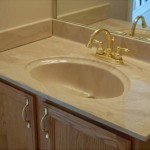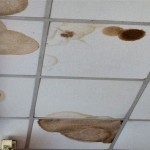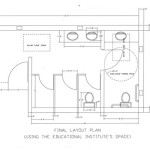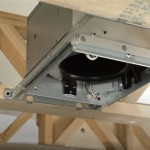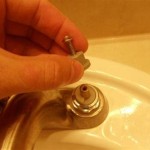How To Fix Rotten Egg Smell In Your Bathroom
A noxious rotten egg smell emanating from a bathroom is a common, yet unpleasant, issue that many homeowners encounter. The source of this offensive odor is typically hydrogen sulfide (H₂S) gas, a colorless gas characterized by its distinctive sulfuric scent. Identifying the root cause is the first step toward effective remediation. This smell can indicate a range of problems, from relatively minor issues with plumbing fixtures to more serious concerns with the main sewer line.
This article provides a comprehensive guide to diagnosing and resolving the rotten egg smell in a bathroom. It outlines potential causes, effective troubleshooting methods, and practical solutions to restore a fresh and odor-free environment. A systematic approach is essential to accurately pinpoint the issue and implement the appropriate corrective measures.
Identifying Potential Sources of the Rotten Egg Smell
Before attempting any repairs or solutions, systematically investigating the possible sources of the smell is crucial. The smell's intensity, location, and frequency can offer valuable clues about its origin. A thorough assessment of the bathroom's plumbing and ventilation systems is necessary.
The Drain Traps: Drain traps, specifically the P-trap located beneath each sink, shower, and tub drain, are designed to hold water, creating a seal that prevents sewer gases from entering the bathroom. When a drain is infrequently used, the water in the P-trap can evaporate, breaking the seal and allowing sewer gases, including H₂S, to seep into the room. This is one of the most common causes of the rotten egg smell.
The Toilet: A faulty toilet can also be a source of the odor. A loose or damaged wax ring at the base of the toilet can allow sewer gases to escape. Additionally, cracks in the toilet bowl or tank can also contribute to the problem, although they are less frequent sources of a significant odor.
The Showerhead: In some cases, bacteria can colonize within the showerhead, particularly in models with complex internal designs. These bacteria can produce H₂S as a byproduct of their metabolic processes, resulting in a rotten egg smell when the shower is used.
The Water Heater: If the rotten egg smell is present in both hot and cold water, the water heater may be the culprit. Sulfate-reducing bacteria can thrive in water heaters, especially those that are infrequently used or set at low temperatures. These bacteria convert sulfates in the water to H₂S.
The Sewer Line: A more serious cause of the rotten egg smell is a problem with the main sewer line. A blockage, break, or leak in the sewer line can allow sewer gases to enter the bathroom through cracks in the floor, walls, or plumbing fixtures. This situation usually requires professional assistance.
Ventilation Issues: Poor ventilation can exacerbate the problem. A bathroom without adequate ventilation allows the H₂S to accumulate, intensifying the odor. Proper ventilation helps disperse the gas and maintain a fresh air supply.
Troubleshooting and Testing Methods
Once the potential sources have been identified, a series of troubleshooting methods can help pinpoint the exact cause of the rotten egg smell. This involves inspecting the plumbing fixtures, testing the water, and ruling out potential problems one by one.
Checking Drain Traps: The simplest test is to run water down each drain for several minutes. This will refill the P-traps and re-establish the water seal. If the smell disappears after running water down a particular drain, that drain was likely the source of the problem. If the smell persists, further investigation is needed.
Inspecting the Toilet: Carefully examine the base of the toilet for any signs of leaks or damage. Check the wax ring seal by gently rocking the toilet. If the toilet rocks easily, the wax ring may be compromised and needs replacement. The toilet tank and bowl should also be inspected for cracks.
Testing the Showerhead: Remove the showerhead and inspect it for any signs of buildup or discoloration. Soak the showerhead in a solution of vinegar and water to kill any bacteria that may be present. If the smell disappears after cleaning the showerhead, it was likely the source of the odor.
Testing the Water Heater: A water test can determine if sulfate-reducing bacteria are present in the water heater. Collect a sample of hot water and cold water in separate containers. Smell each sample. If the rotten egg smell is present only in the hot water, the water heater is likely the source of the problem. A more thorough test can be conducted by a water quality testing laboratory to confirm the presence of sulfate-reducing bacteria.
Checking the Sewer Vent Pipe: The sewer vent pipe extends from the plumbing system to the roof, allowing sewer gases to escape outside the building. Ensure the vent pipe is not blocked by debris, such as leaves, bird nests, or snow. A blocked vent pipe can cause sewer gases to back up into the bathroom.
Smoke Test: For persistent odors, a professional plumber can perform a smoke test. This involves introducing non-toxic smoke into the plumbing system to identify any leaks or cracks in the pipes. The smoke will escape from the point of the leak, making it easy to locate the source of the odor.
Implementing Solutions to Eliminate the Rotten Egg Smell
Once the source of the rotten egg smell has been identified, implementing the appropriate solutions is crucial to eliminate the odor and prevent it from returning. The specific solution will depend on the identified cause.
Refilling Drain Traps: For drains that are infrequently used, simply running water down the drain regularly can prevent the water in the P-trap from evaporating. Consider adding mineral oil to the P-trap to slow the evaporation process. Mineral oil forms a barrier on top of the water, reducing the rate at which it evaporates.
Replacing the Toilet Wax Ring: If the toilet wax ring is faulty, it needs to be replaced. This involves removing the toilet, scraping away the old wax ring, and installing a new wax ring. Ensure the new wax ring is properly seated and the toilet is securely reinstalled.
Cleaning or Replacing the Showerhead: Clean the showerhead regularly with a solution of vinegar and water to prevent bacteria from colonizing. If the showerhead is heavily contaminated or damaged, consider replacing it with a new one.
Flushing the Water Heater: Flushing the water heater can help eliminate sulfate-reducing bacteria and sediment buildup. This involves draining the water heater tank and refilling it with fresh water. Follow the manufacturer's instructions for flushing the water heater. In severe cases, a water heater may need to be disinfected with bleach or hydrogen peroxide, following the manufacturer's guidelines and safety precautions. Consider raising the water heater temperature to at least 140°F (60°C) for several hours to kill bacteria. Be sure to adjust the temperature back to a safe level after the treatment period to prevent scalding.
Cleaning the Sewer Vent Pipe: Inspect the sewer vent pipe and remove any debris that may be blocking it. If the vent pipe is difficult to access, consider hiring a professional plumber to clean it.
Addressing Sewer Line Issues: If the rotten egg smell is caused by a problem with the main sewer line, professional assistance is required. A plumber can diagnose the problem and recommend the appropriate repairs. This may involve repairing or replacing damaged sections of the sewer line.
Improving Ventilation: Ensure the bathroom has adequate ventilation. Install or upgrade the bathroom exhaust fan to improve airflow. Run the exhaust fan during and after showers and baths to remove moisture and prevent the accumulation of sewer gases. Open a window in the bathroom, if available, to provide additional ventilation.
Using Drain Cleaners Judiciously: While chemical drain cleaners may seem like a quick fix, they can damage pipes and contribute to the problem in the long run. Harsh chemicals can corrode pipes, creating cracks and leaks that allow sewer gases to escape. Use enzyme-based drain cleaners instead, as they are less harsh and more effective at breaking down organic matter that can contribute to odors.
Maintaining Plumbing Fixtures: Regular maintenance of plumbing fixtures can help prevent the rotten egg smell from recurring. Check and tighten plumbing connections to prevent leaks. Flush drains regularly to prevent buildup of organic matter. Inspect the toilet for leaks and damage. Clean showerheads and other fixtures regularly to prevent bacteria growth.
Water Softeners: If hard water is contributing to the problem, consider installing a water softener. Hard water can react with sulfates in the water, creating a more favorable environment for sulfate-reducing bacteria. A water softener can remove minerals that contribute to hard water, improving water quality and reducing the likelihood of bacterial growth.
Professional Plumbing Inspection: If the problem persists despite implementing these solutions, consider hiring a professional plumber to conduct a comprehensive inspection of the plumbing system. A plumber can identify any hidden problems and recommend the appropriate repairs.

Your Toilet Smells Like Rotten Eggs Mr Rooter

3 Reasons Why Your Bathroom Smells Bad And How To Fix It Plumbing Company Columbia Tn Pipe Master

Toilet Smell Likes Rotten Eggs Rainaldi Home Services

Toilet Smells Like Rotten Eggs Poole S Plumbing Raleigh Plumbers

Toilet Smells Like Rotten Eggs When Flushed Home Guide Corner

Why Does My Bathroom Smell Like Sulfur How Do I Fix It

What To Do When Your Drains Smell Like Rotten Eggs Black Haak

What S The Verdict When A Shower Smells Like Rotten Eggs Bill Plumbing Sewer Inc

Do Your Drains Smell Like Rotten Eggs Huft Home Services

My Bathroom Smells Like A Sewer What Causes That And How Do You Fix It Kitchen Infinity
Related Posts

